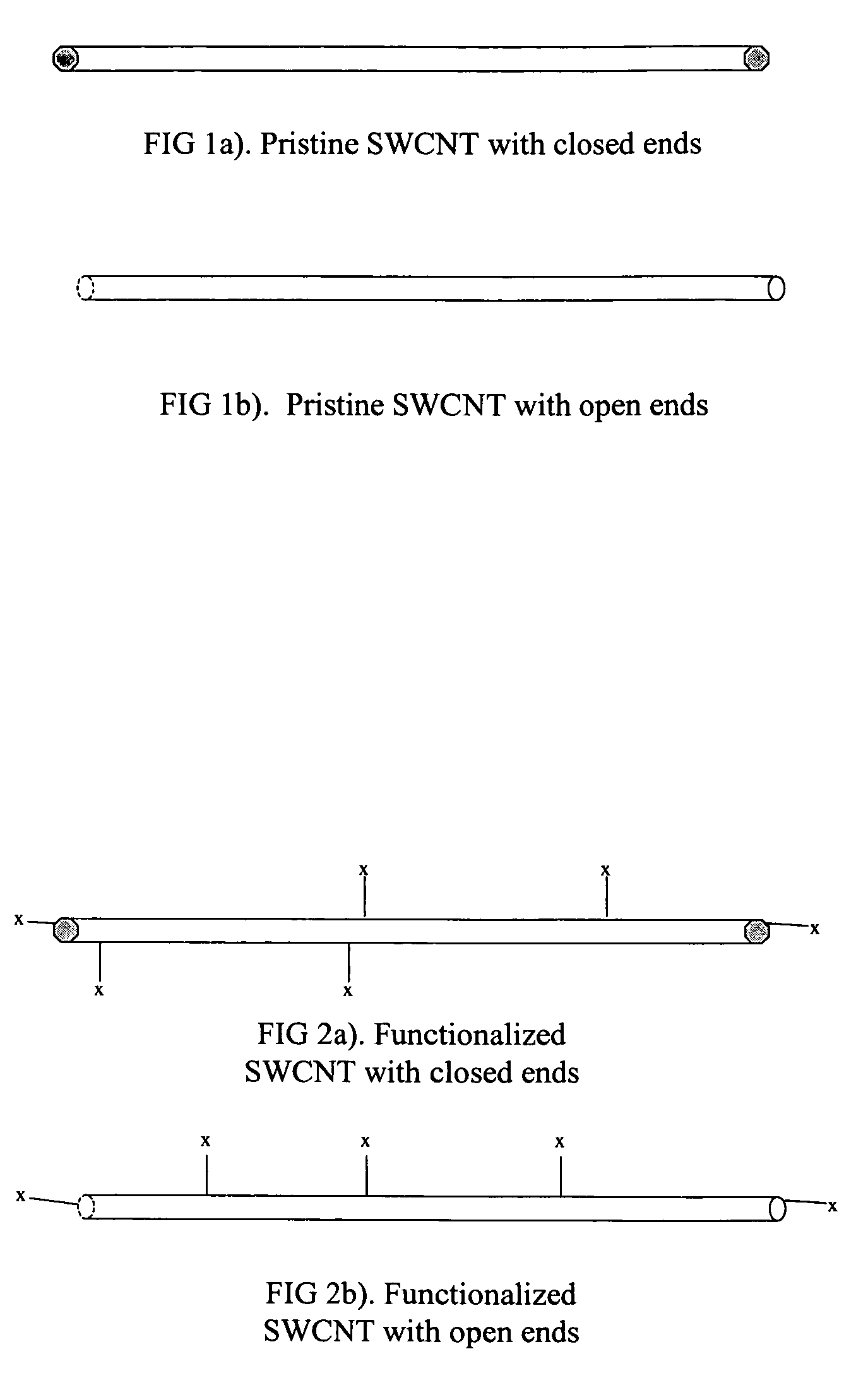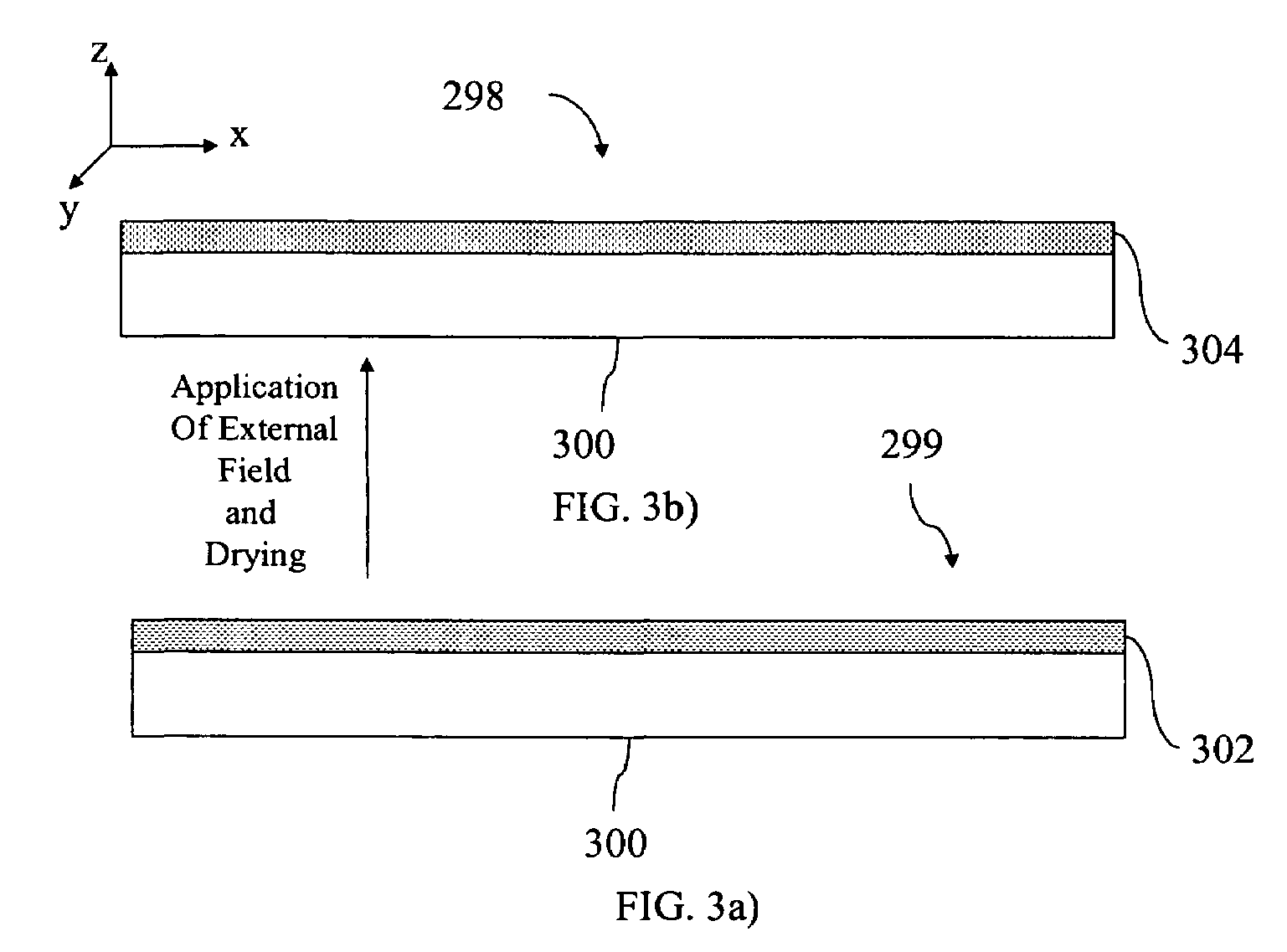Displays with low driving voltage and anisotropic particles
a technology of anisotropic particles and low driving voltage, applied in the field of high contrast displays, can solve the problems of loss of performance, uv radiation is harmful to liquid crystals, change in reflected color, etc., and achieve the effects of high driving voltage, increased power consumption, and high driver cos
- Summary
- Abstract
- Description
- Claims
- Application Information
AI Technical Summary
Benefits of technology
Problems solved by technology
Method used
Image
Examples
example 1
Control
[0138]This example describes fabrication and performance of a control device. A control device was constructed according to the format shown in FIG. 5. The chiral nematic liquid crystal material MDA-01-1955 was combined with MDA-00-3506 (both obtained from Merck, Darmstadt, Germany) to create a mixture having a reflection wavelength centered at 590 nm. A limited coalescence dispersion of this mixture in water was then prepared with mean droplet size close to 10 μm. The dispersion was combined with an aqueous solution of fish skin gelatin and a suitable cross-linking agent for gelatin and spread at room temperature onto a plastic surface covered with indium tin oxide (ITO). The droplets of liquid crystal self-assembled upon drying to create a close-packed monolayer. The gelatin was allowed to cross-link to preserve the close-packed architecture. A barrier layer containing aqueous gelatin and carbon black was then coated over the liquid crystal layer. The concentration of carbo...
example 2
Control
[0140]This example describes fabrication and performance of a second control device. Construction of this device was similar to that described in Example 1 except that the mean size of the liquid crystal droplets was 7.5 μm instead of 10 μm. Furthermore, the dried thickness of the barrier layer was 0.6 μm instead of 1.0 μm and the concentration of carbon black in the barrier layer was 50 wt % relative to gelatin instead of 35 wt %. The resistivity of the barrier layer was determined to be 1.6×106 ohms / sq using a parallel electrode fixture according to ASTM D257 with a test voltage of 10 volts DC.
[0141]The electro-optic response of this device was measured in the same manner as described previously under Example 1 and is shown in FIG. 7. The maximum drive voltage in this case is about 45 volts. However, there is significant conduction in the x-y plane as evidenced by undesirable field spreading. In other words, the electro-optic response is not confined to the activated patch ...
example 3
Invention
[0142]This example illustrates fabrication of a device according to the method of the invention. The chiral nematic liquid crystal material MDA-01-1955 is combined with MDA-00-3506 (both obtained from Merck, Darmstadt, Germany) to create a mixture having a reflection wavelength centered at 590 nm. A limited coalescence dispersion of this mixture in water is then prepared with mean droplet size close to 10 μm. The dispersion is combined with an aqueous solution of fish skin gelatin and a suitable cross-linking agent for gelatin and spread at room temperature onto a plastic surface covered with indium tin oxide (ITO). The droplets of liquid crystal self-assemble upon drying to create a close-packed monolayer. The gelatin is allowed to cross-link to preserve the close-packed architecture. A barrier layer containing aqueous gelatin, 5 wt % carbon nanotubes, such as functionalized carbon nanotubes P3 from Carbon Solutions, Inc., and a black pigment composition is then coated ove...
PUM
| Property | Measurement | Unit |
|---|---|---|
| thickness | aaaaa | aaaaa |
| driving voltage | aaaaa | aaaaa |
| thickness | aaaaa | aaaaa |
Abstract
Description
Claims
Application Information
 Login to View More
Login to View More - R&D
- Intellectual Property
- Life Sciences
- Materials
- Tech Scout
- Unparalleled Data Quality
- Higher Quality Content
- 60% Fewer Hallucinations
Browse by: Latest US Patents, China's latest patents, Technical Efficacy Thesaurus, Application Domain, Technology Topic, Popular Technical Reports.
© 2025 PatSnap. All rights reserved.Legal|Privacy policy|Modern Slavery Act Transparency Statement|Sitemap|About US| Contact US: help@patsnap.com



